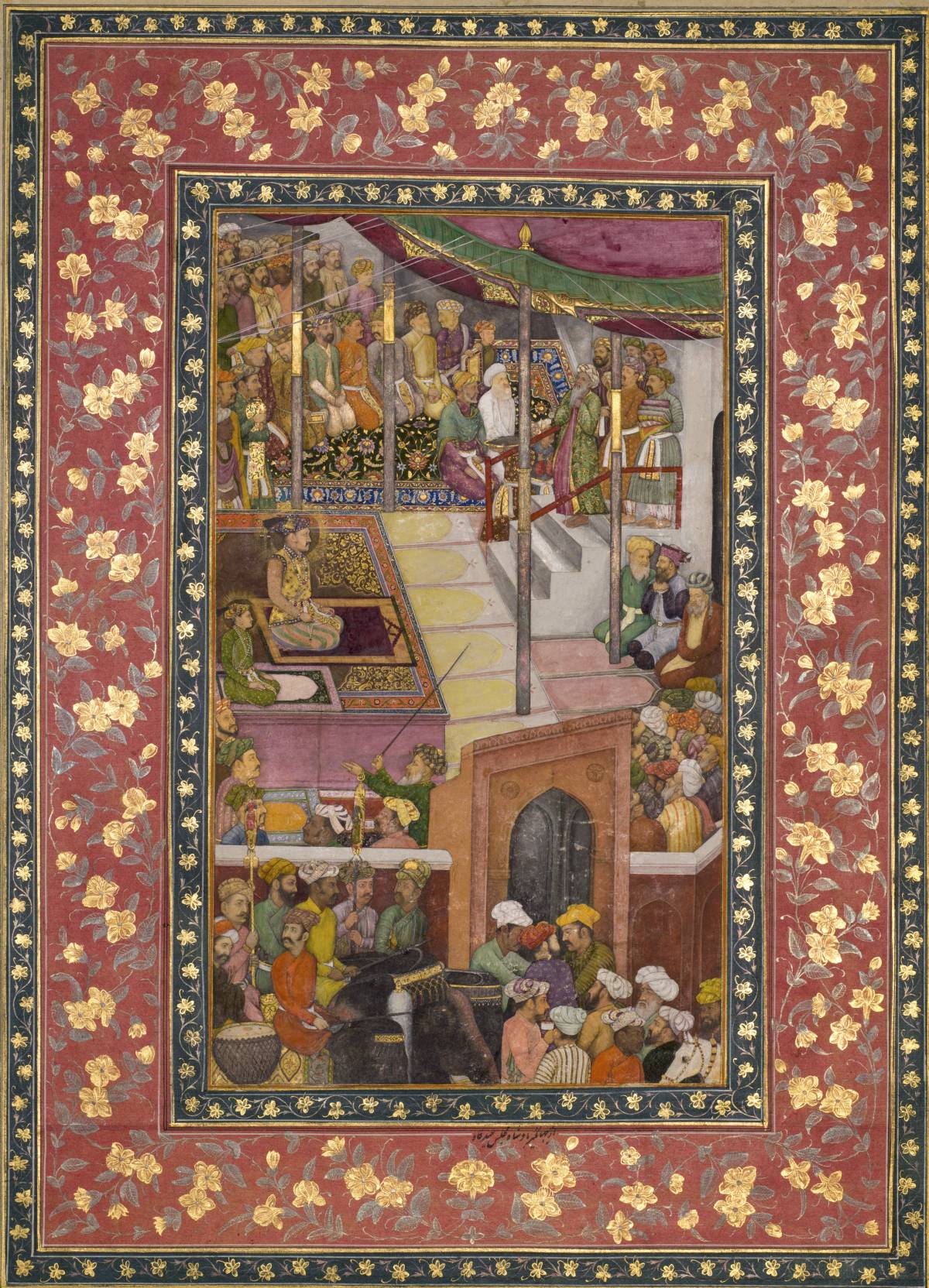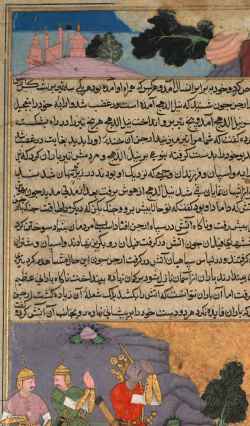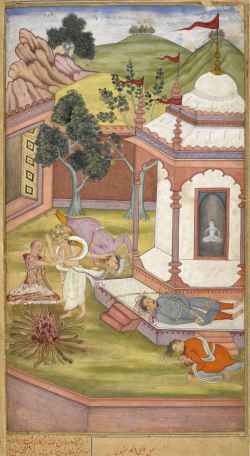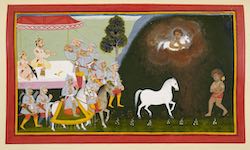Emperor Jahangir and Prince Khurram at the gathering for the Feast of the Sacrifice
Year: 1615-1625
From: India
Location: Staatliche Museen zu Berlin, Museum für Islamische Kunst
External link: id.smb.museum
Edited by: Chiara Petrolini
Related Documents:
A mountain city with multistoried hill architecture. Outside the gates on the right is a Saivite shrine with a lingum covered by floral offerings to which a goat is led, probably for sacrifice. (17th)
from: Unidentified Hindu chronicle of a King
Metropolitan Museum, New York
Quand le rite devient technique. Sacrifice et abattage dans le monde musulman
in: Techniques & Culture, v. 21 (1993), issue : pp.79-96.
"The First Adventure of the White Horse". The king performed the horse sacrifice in order to determine the extent of his rule. For one year a horse wanders and every land through which the horse passes becomes part of the king’s territory. Arjuna following the horse encountered the son-in-law of the god of fire, Agni, who creates a river of fire to block the warriors. Arjuna pleads with Agni, the god of fire that the horse be allowed to pass, saying that the horse sacrifice is in accordance with sacred Vedic injunctions, and that at the end of the year, the horse will be sacrificed to him, the god of fire himself. (1610-1617)
from: Page from the Khan Khanan's Razm Nama (Book of Wars)
The Cleveland Museum of Art
Candrahasa sacrifices himself cutting off pieces of his own flesh and putting them on the fire [1598]
from: Razmnāmah by Abhinanda, India (The last volume of the Persian translation of the Mahābhārata commissioned in 990 by Akbar)
London, British Library, Or 12076 folio: 90v
King Sagara performs a sacrifice (1712)
from: Ramayana, Bala Kanda
British Library, Add. 15295, f.105





